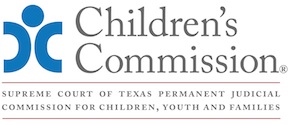
Texas Child Protection Law Bench Book
Updated September 2025
F. Special Education and Section 504
1. The Individuals with Disabilities Education Act
Under the Individuals with Disabilities Education Act (IDEA), all children with disabilities between the ages of 3 and 21 are entitled to a Free, Appropriate Public Education (FAPE). 20 U.S.C. § 1412(a)(1)(A). A child qualifies for special education if they have an identified disability and that disability adversely affects the child's performance in school. 20 U.S.C. § 1400 et seq. and Tex. Educ. Code § 29.003.
2. Section 504
Section 504 of the Rehabilitation Act of 1973 (Section 504) is a federal law aimed at protecting individuals from discrimination on the basis of a physical or mental disability that substantially impairs a major life activity.[222] 29 U.S.C. § 794.
Special Issue: Some children may qualify for Section 504 accommodations to “level the playing field” without changing what the child is expected to master. For example, a child with dyslexia may not be eligible for special education services, but might qualify for Section 504 accommodations, such as additional time to complete an exam or preferred seating in the classroom.
3. Referral and Consent
School districts have a "Child Find" duty to identify, locate, and evaluate children with disabilities to determine which children are currently receiving needed special education and related services. 20 U.S.C. § 1412(a)(3)(A).
If a parent or legal guardian makes a written request to a school district's director of special education services or to a district administrative employee for a full individual and initial evaluation of a student, the district shall, not later than the 15th school day after the date the district receives the request:
• Provide an opportunity for the parent or legal guardian to give written consent for the evaluation; or
• Refuse to provide the evaluation and provide the parent or legal guardian with notice of procedural safeguards under 20 U.S.C. § 1415(b) and Tex. Educ. Code § 29.004(c).
If the rights of a parent have been terminated or subrogated by court order or the school has made reasonable efforts and cannot locate the parent, an initial evaluation may be initiated without parental consent. 20 U.S.C. § 1414(a)(1)(D)(iii).
The school has 45 days to complete a full individual and initial evaluation of the student for special education services. Tex. Educ. Code § 29.004(a)(1).
4. Individualized Education Program
Children who receive special education services will have an IEP. 20 U.S.C. § 1414(d). Members of the child's IEP team, known in Texas as the ARD committee, participate in the formulation and approval of the IEP.[223] Tex. Educ. Code § 29.005. A student's ARD committee must meet at least annually to review a student's Behavioral Intervention Plan (BIP) to account for changes in circumstances. Tex. Educ. Code § 29.005(h).
It is the responsibility of the school district to ensure that the ARD Committee includes:
• The parents of a child with a disability;
• Not less than one regular education teacher of such child (if the child is, or may be, participating in the regular education environment);
• Not less than one special education teacher, or where appropriate, not less than one special education provider of such child;
• A representative of the local educational agency who:
◦ is qualified to provide, or supervise the provision of, specially designed instruction to meet the unique needs of children with disabilities;
◦ is knowledgeable about the general education curriculum; and
◦ is knowledgeable about the availability of resources of the local educational agency;
• An individual who can interpret the instructional implications of evaluation results, who may be a member of the team described in 20 U.S.C. § 1414(d)(1)(B)(ii)-(vi);
• At the discretion of the parent or the agency, other individuals who have knowledge or special expertise regarding the child, including related services personnel as appropriate; and
• Whenever appropriate, the child with a disability. 20 U.S.C. § 1414(d)(1)(B).
5. Special Education Transitions
A receiving school must accept a referral for special education services made for a student in substitute care by a school previously attended by the student. Tex. Educ. Code § 25.007(b)(9). If there is an existing IEP for the child, the receiving school must provide services comparable to those described in the previous IEP, until it either adopts the previous IEP or develops a new IEP. 20 U.S.C. § 1414(d)(2)(C)(i)(I) and Tex. Educ. Code § 25.007(b)(9).
6. Manifestation Determination Review
The right to FAPE includes students who have been suspended or expelled from school. 20 U.S.C. § 1412(a)(1)(A). Members of the ARD Committee must conduct a manifestation determination review within 10 school days of any decision to change the educational placement, including suspension, removal, or expulsion, of a student with a disability due to a violation of the student code of conduct to determine if:
• The conduct in question was caused by, or had a direct and substantial relationship to, the child's disability; or
• The conduct in question was the direct result of the local educational agency's failure to implement the IEP. 20 U.S.C. § 1415(k)(1)(E) and Tex. Educ. Code § 37.001(a)(4)(D)-(E).
7. Graduation
A child who successfully completes their IEP under Tex. Educ. Code § 29.005 is eligible for a high school diploma. Tex. Educ. Code § 28.025(c).